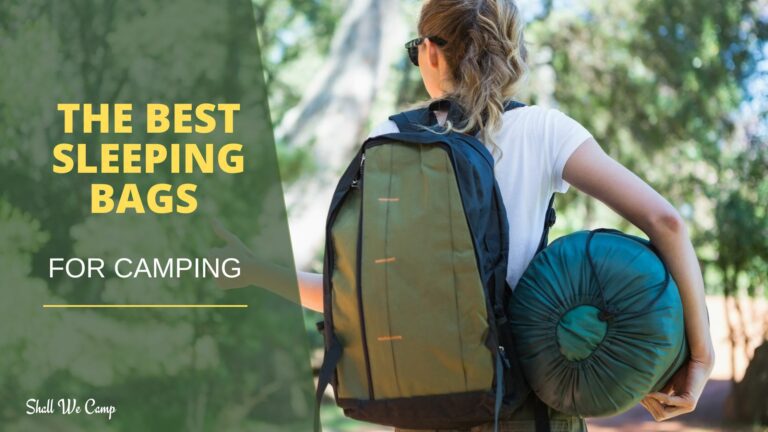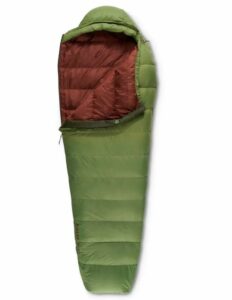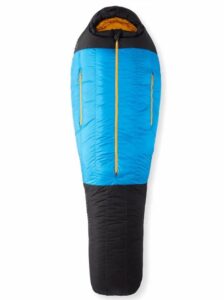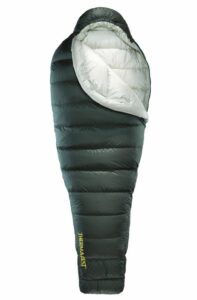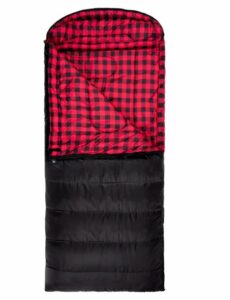The right sleeping bag keeps you warm and safe, especially in harsh weather conditions. Hypothermia and other cold-related issues are real dangers, and a quality sleeping bag can save the day.
Whether you're heading out on a summer backpacking trip or setting up camp in colder weather, there’s a sleeping bag designed to suit your needs.
When choosing a sleeping bag, you need to think about several various factors… Climate, Terrain, and Personal Preference.
Climate – Is it going to be frigid or scorching hot? This will dictate the type of insulation and temperature rating you need.
Terrain – Are you camping on a cushy campsite or venturing into rough terrains? Some sleeping bags are designed to be more durable for those rugged conditions.
Personal Preference – Are you someone who likes to move around a lot while sleeping, or do you prefer being snug as a bug in a mummy-style bag? Do you get cold easily?
Answering these questions can help narrow down the perfect choice for you.
Affiliate Disclaimer: This site contains affiliate links, which means I may earn a commission on purchases made through these links at no extra cost to you.
Table of Contents
Top Picks: The Best Sleeping Bags for Different Camping Scenarios
Summer Camping:
Lightweight and breathable sleeping bags are the way to go when it's hot. You want something that won't make you sweat through those warm nights. Look for bags with good ventilation features and temperature ratings suited for warmer climates.
Our Pick: Kelty Cosmic 40
Winter Camping:
Winter campers, on the other hand, need something that can handle frigid temps. Bags with down insulation are excellent choices. They're designed to keep you warm when the temperatures take a nose dive.
Our Pick: Marmot CWM -40
Backpacking:
Backpackers and those who like to travel light, lean towards ultralight sleeping bags. They pack down small and don’t add much weight to your gear.
Our Pick: Therm-a-Rest Hyperion
Family Camping:
For family camping, you’ll want sleeping bags that are roomy and cozy. These bags offer ample space and are great for kids who might feel claustrophobic in tighter bags. Also, think about bags with easy-zip features to make bedtime less of a hassle.
Our Pick: TETON Sports Celsius XXL
Key Features to Look for in a Sleeping Bag
Temperature ratings on sleeping bags tell you the lowest temperature where the bag will keep you warm. Tools like the EN (European Norm) or ISO (International Organization for Standardization) ratings help make this easy to understand. Just remember, it’s better to pick a bag rated for slightly colder temps than you expect.
Insulation is another key factor. You’ve got two main types: down and synthetic. Down insulation is lighter and compresses more but can be a pain if it gets wet. Synthetic, while bulkier, performs better in damp conditions and is often more budget-friendly.
Shape and size are important to look at as well. There’s the mummy shape, which wraps you up tight, which is great for heat retention. Then there’s the rectangular shape that gives more room to move. Think about your particular sleep style when choosing. Consider length as well and make sure you get the right size for your height.
Extra features to look for include hoods that keep your head warm and draft collars that block out the chilly air. Double zippers allow for better ventilation, and look for anti-snag designs that can save you headaches. Some bags even come with pockets for your essentials or stuff sacks for easy packing.
How to Care for Your Sleeping Bag to Ensure Longevity
Proper care means your sleeping bag will be with you for the long haul. Cleaning it the right way is super important. Hand-washing in a bathtub with mild soap or using a front-loading washing machine on a gentle cycle works best. Avoid top loaders because their agitators can be rough on the fabric. Make sure to rinse thoroughly to get all the soap out.

Drying your sleeping bag takes a bit of patience. Forget about hanging it up like regular laundry. Instead, use a large commercial dryer on low heat. Toss in a few clean tennis balls to help fluff it up and prevent clumping. If you’re in a pinch and need to air-dry, lay it flat in a well-ventilated area out of direct sunlight.
Compressed bags can lose their loft over time, so don’t keep them stuffed in their sacks when not in use. Instead, store your sleeping bag loosely in a large cotton or mesh storage bag. Hanging it in a cool, dry closet works too.
Occasionally repairs are needed. Small tears can be fixed with fabric repair tape or patches. For broken zippers, use a bit of candle wax or a pencil lead rubbed along the teeth. If the problem is more serious, you might need to consider professional repair services.
Eventually, every sleeping bag will give up the ghost. If it’s losing loft, not keeping you warm, or showing serious signs of wear and tear, it might be retirement time. Keeping an old, ineffective sleeping bag isn’t worth risking a miserable night outdoors.
Expert Tips for Maximizing Comfort and Warmth
Layering:
Wearing thermal layers or moisture-wicking fabrics inside the bag helps trap heat. Don't forget a good pair of socks and a warm hat that will keep your extremities cozy.
Sleeping Pad:
A sleeping pad creates a barrier between you and the cold ground, adding extra insulation. Inflatable pads or closed-cell foam pads both work well, depending on your preference and pack space. Some even slip inside special sleeves available in certain sleeping bags.
Liners:
A liner is also worth considering. They can add a few degrees of warmth and keep your bag cleaner for longer. Silk liners are lightweight and comfy, while fleece ones add extra warmth.
Keep Dry:
Staying dry is a must for comfort and warmth. Always use a waterproof stuff sack to keep your sleeping bag dry when packing. If your bag does get damp, air it out as soon as possible, since wet down or synthetic filling doesn't insulate well.
Hot Water Bottle:
Keep a hot water bottle at your feet for extra warmth. You could also use a hot rock from the campfire wrapped in a towel or piece of clothing.
If you’re looking to invest in new gear, we’ve put together a few of our favorite picks for sleeping pads, pillows, and cold-weather comfort. These are the same items we use and love and are perfect for your next outdoor adventure.

